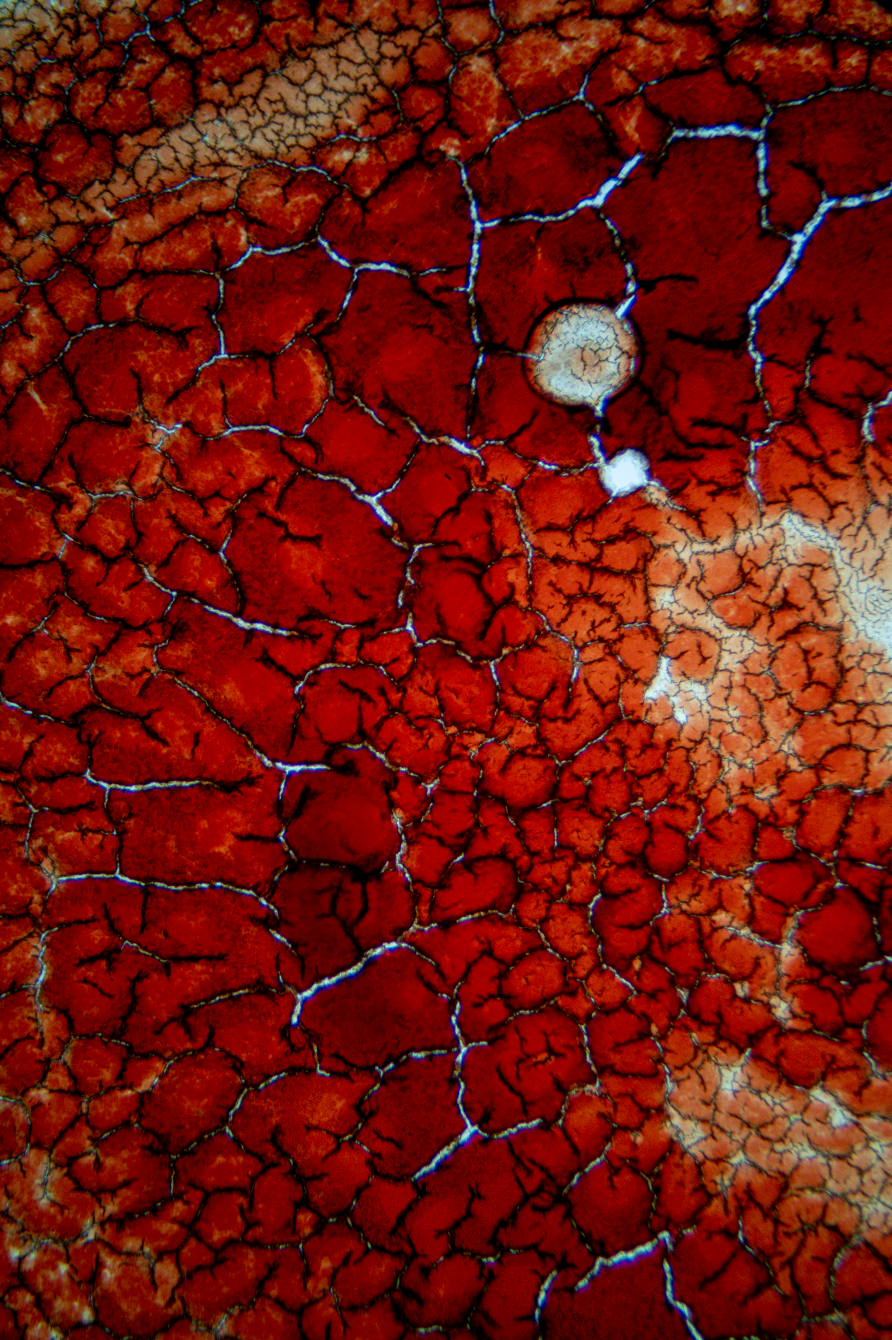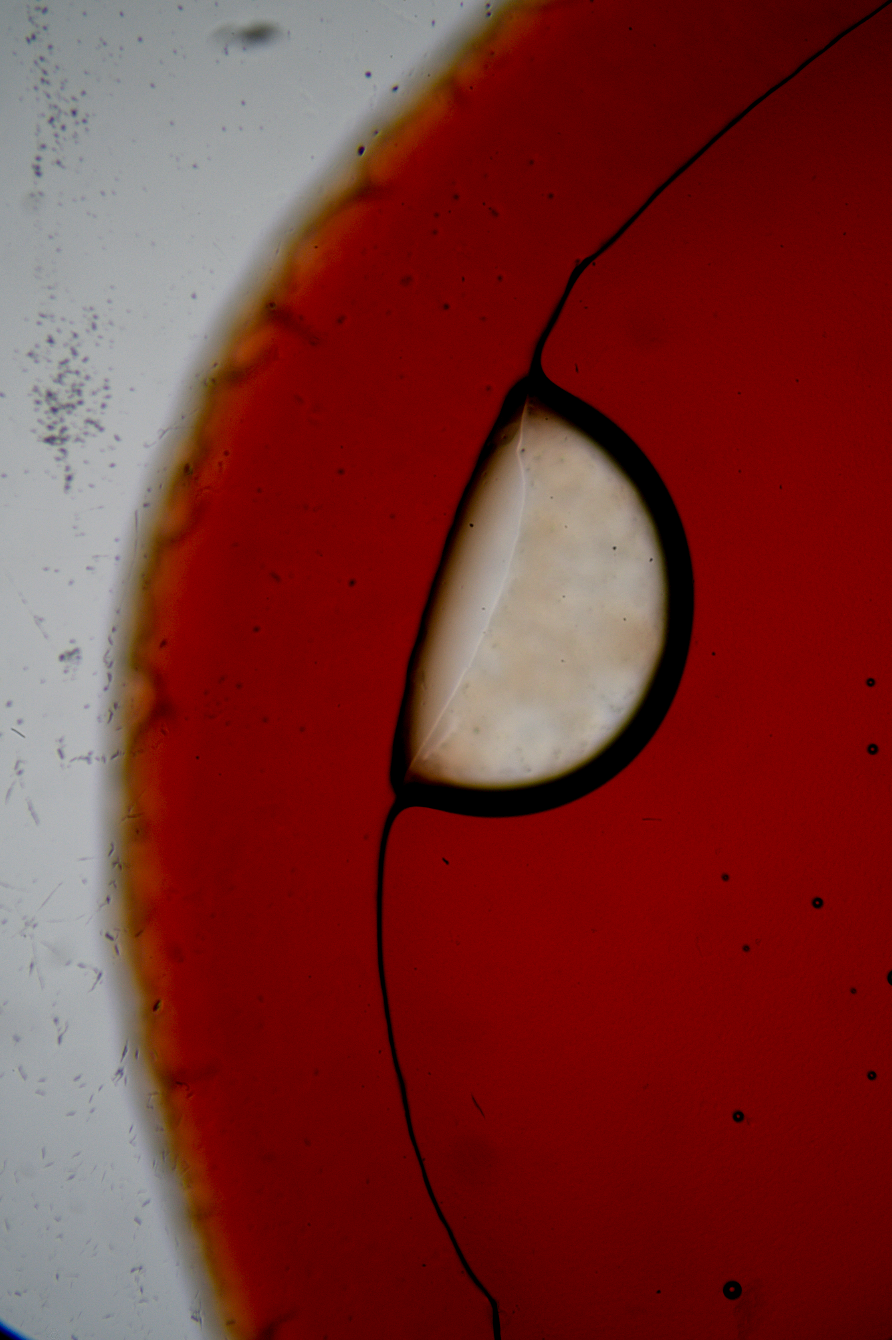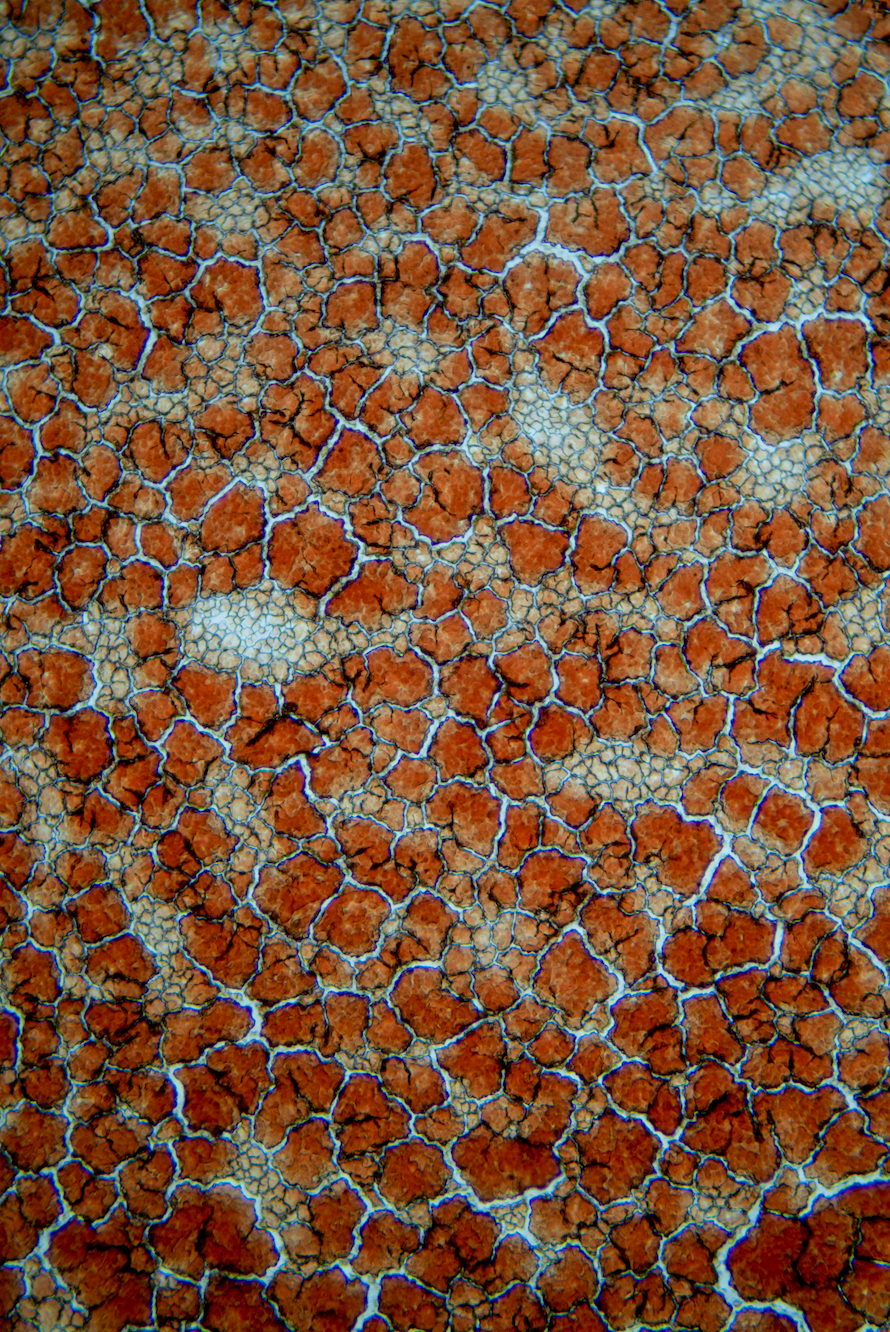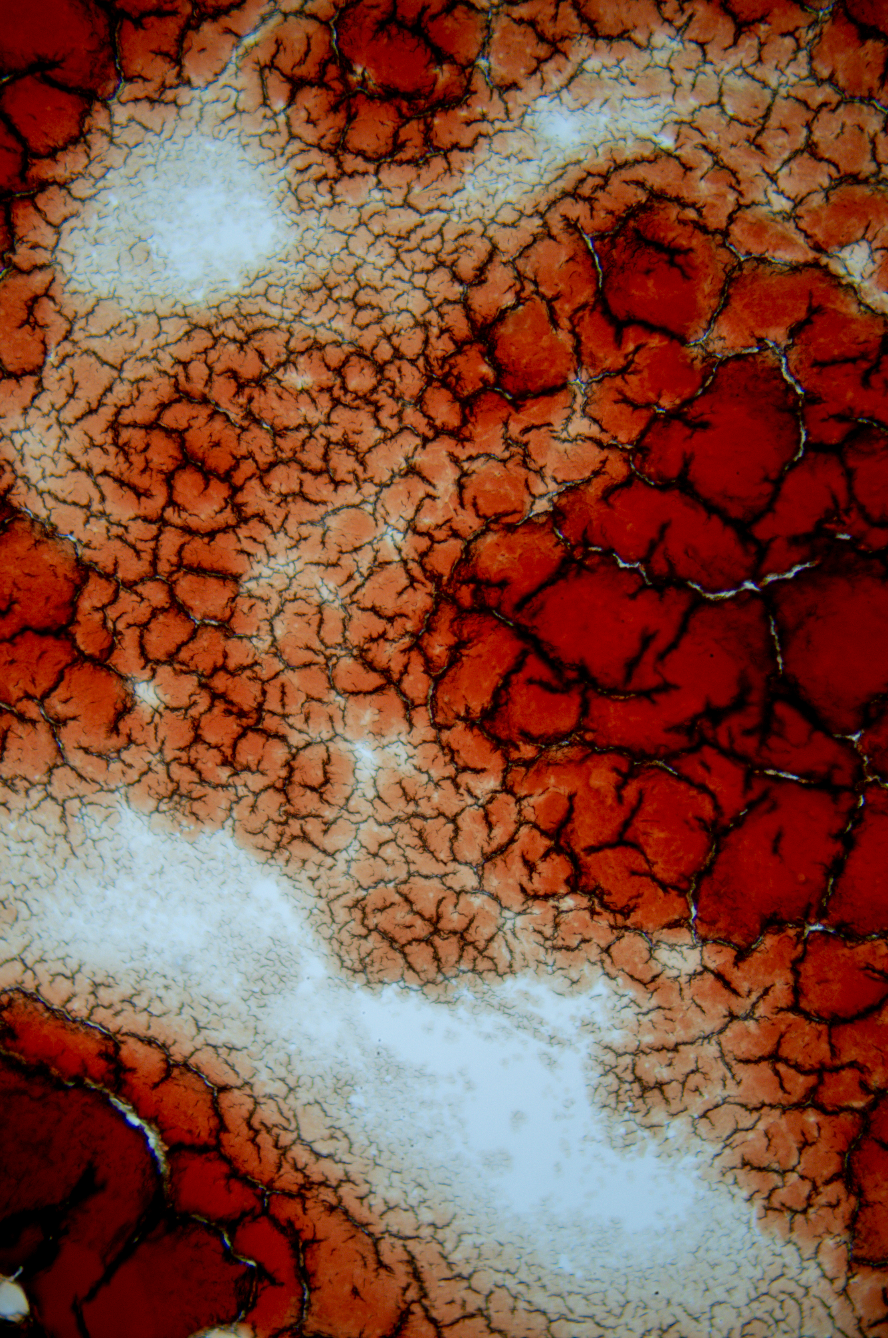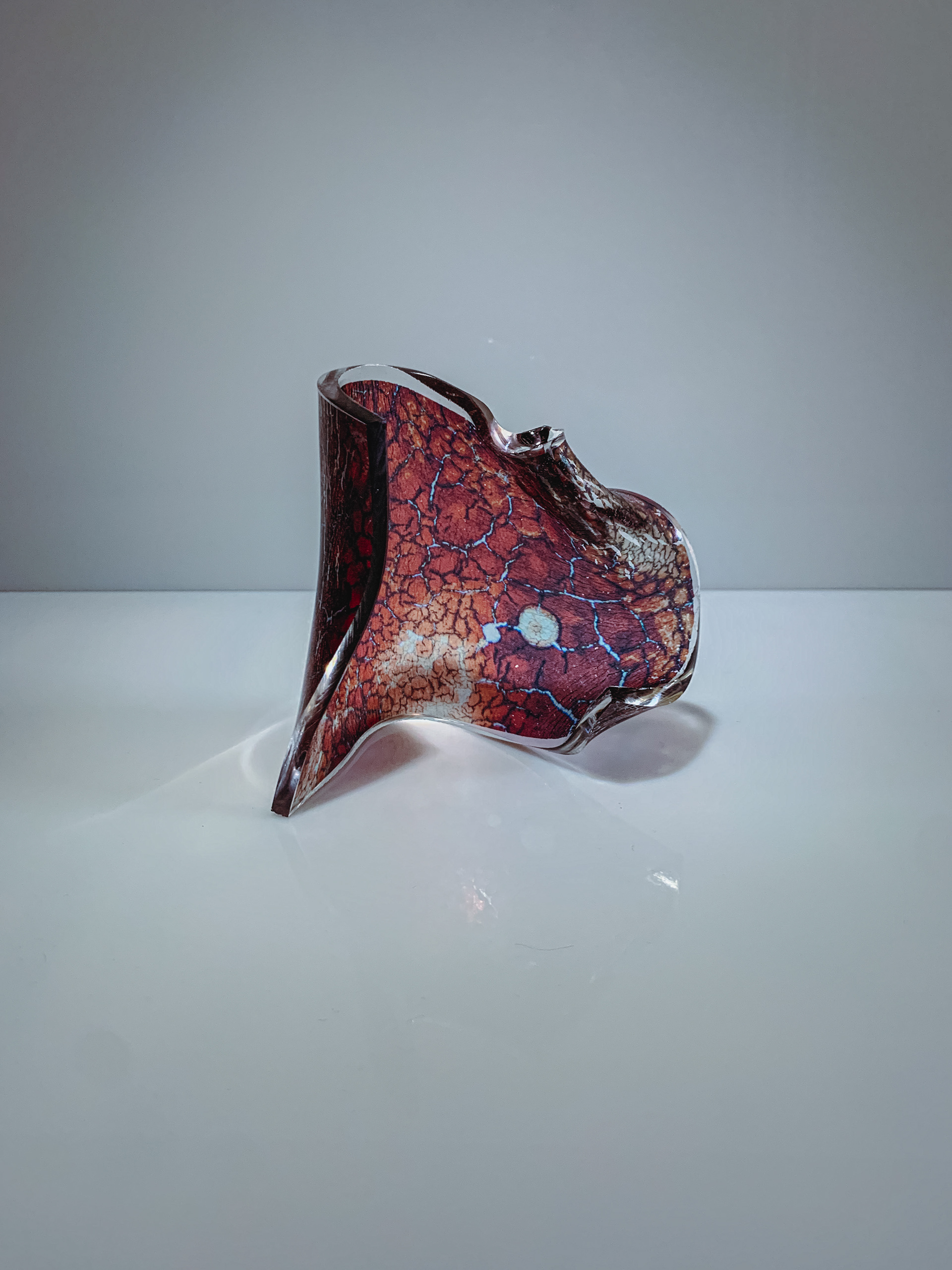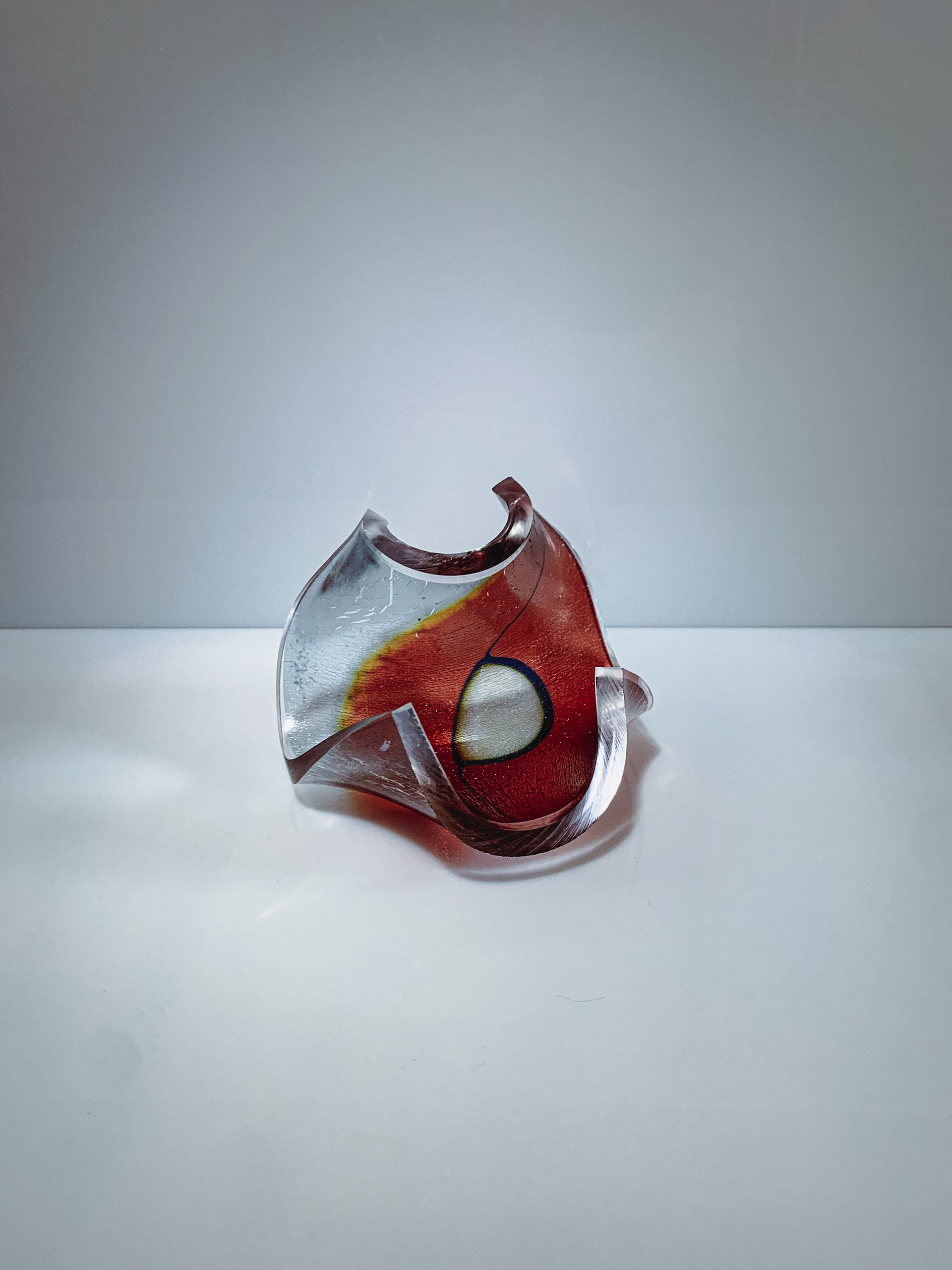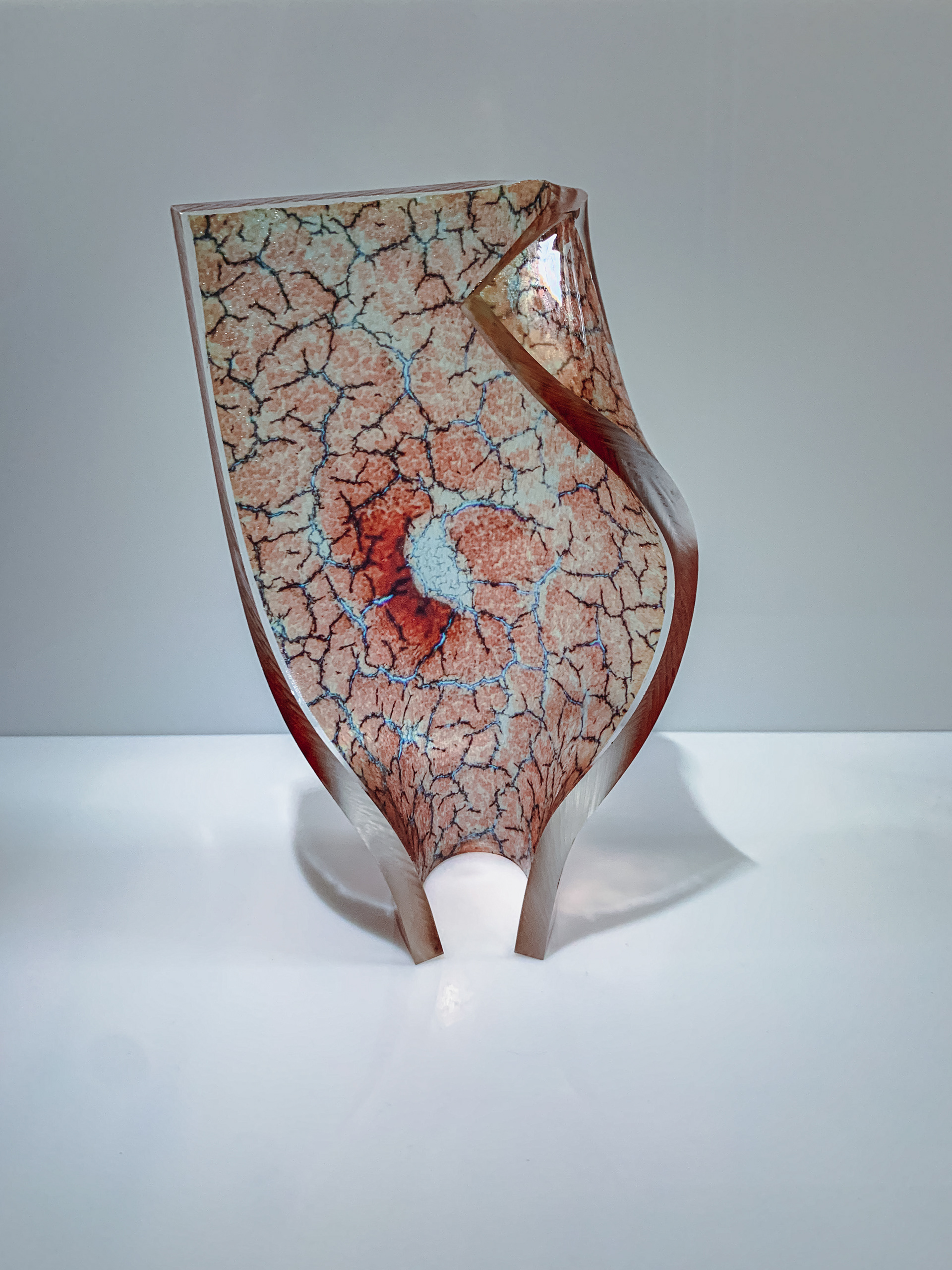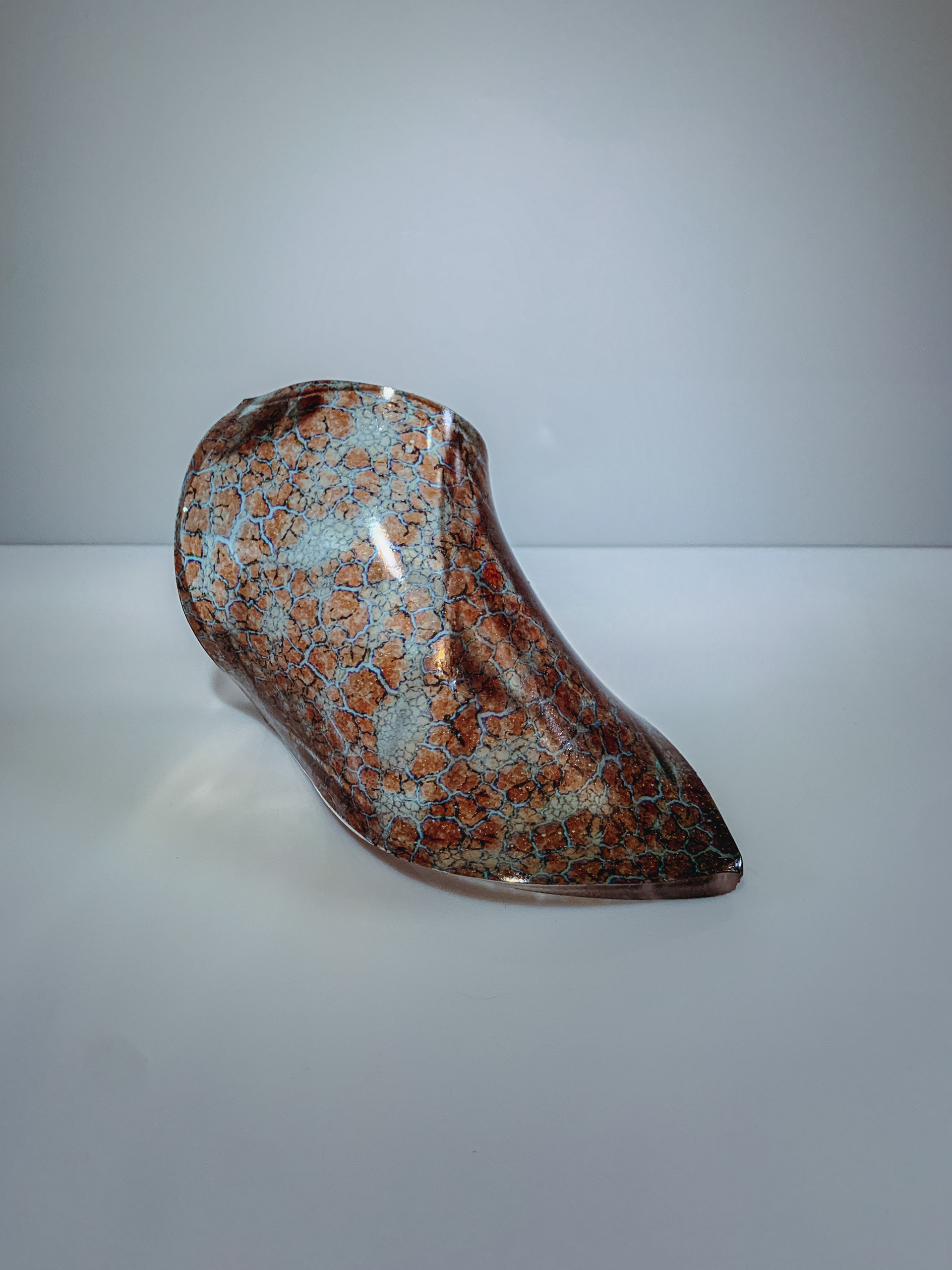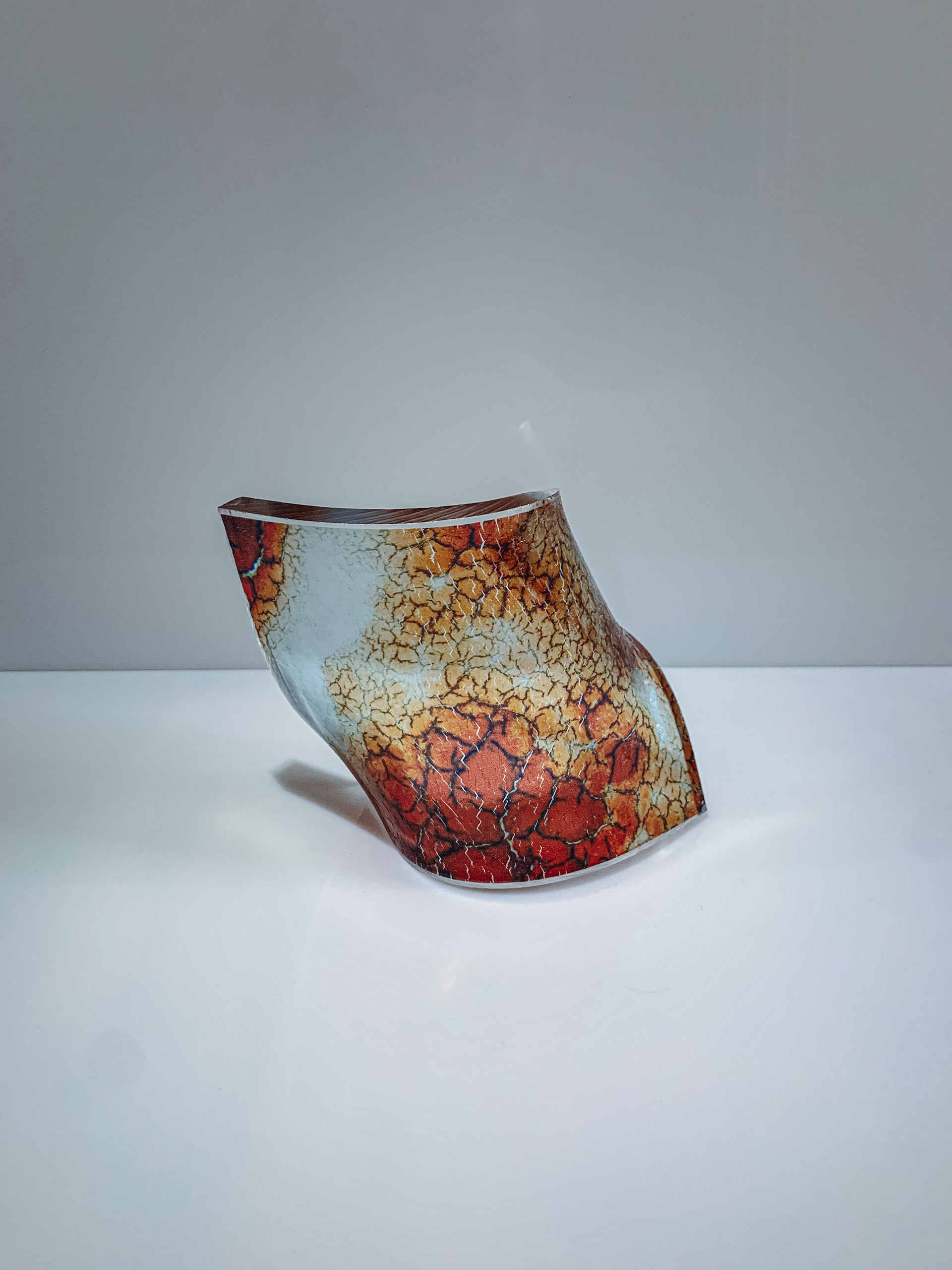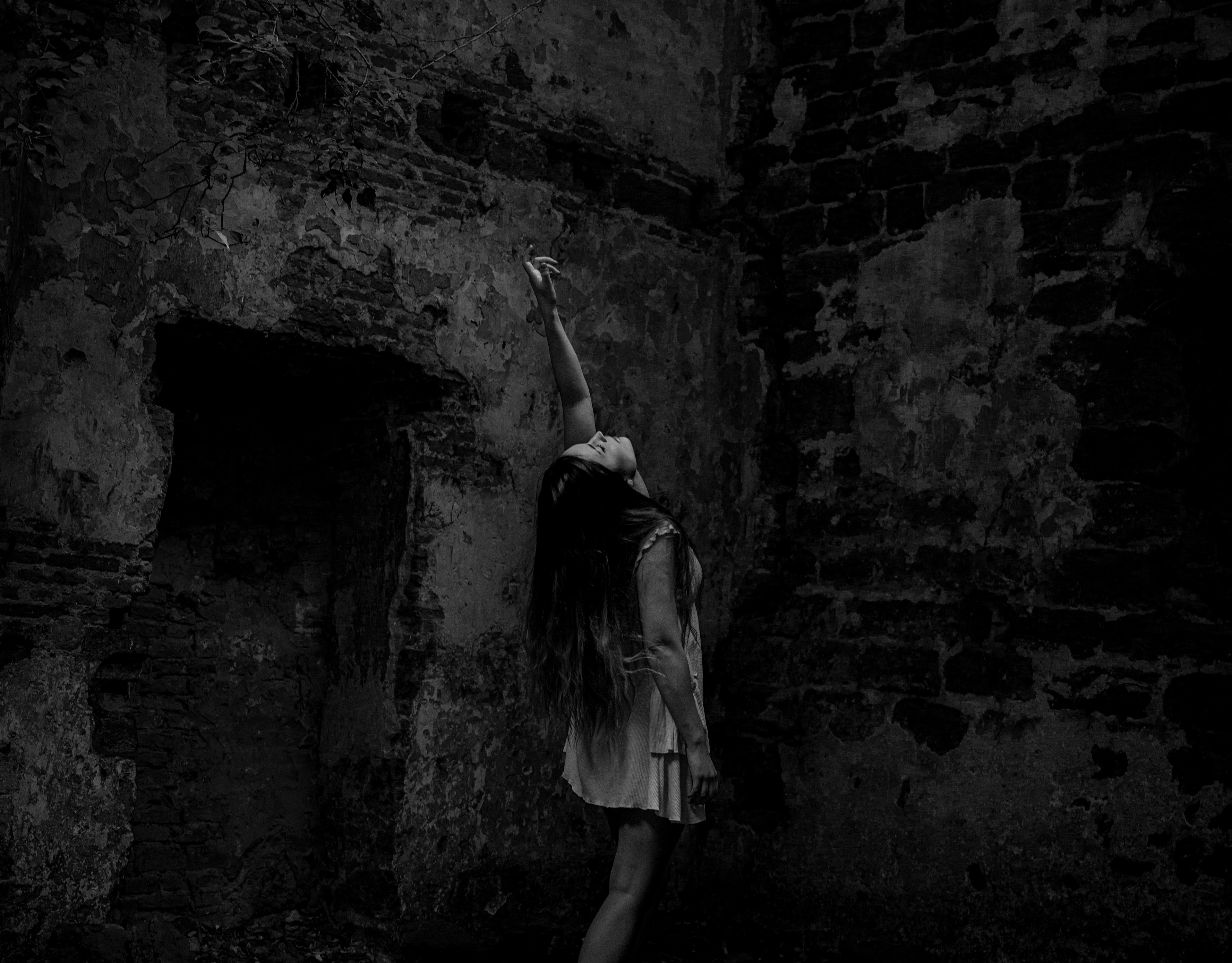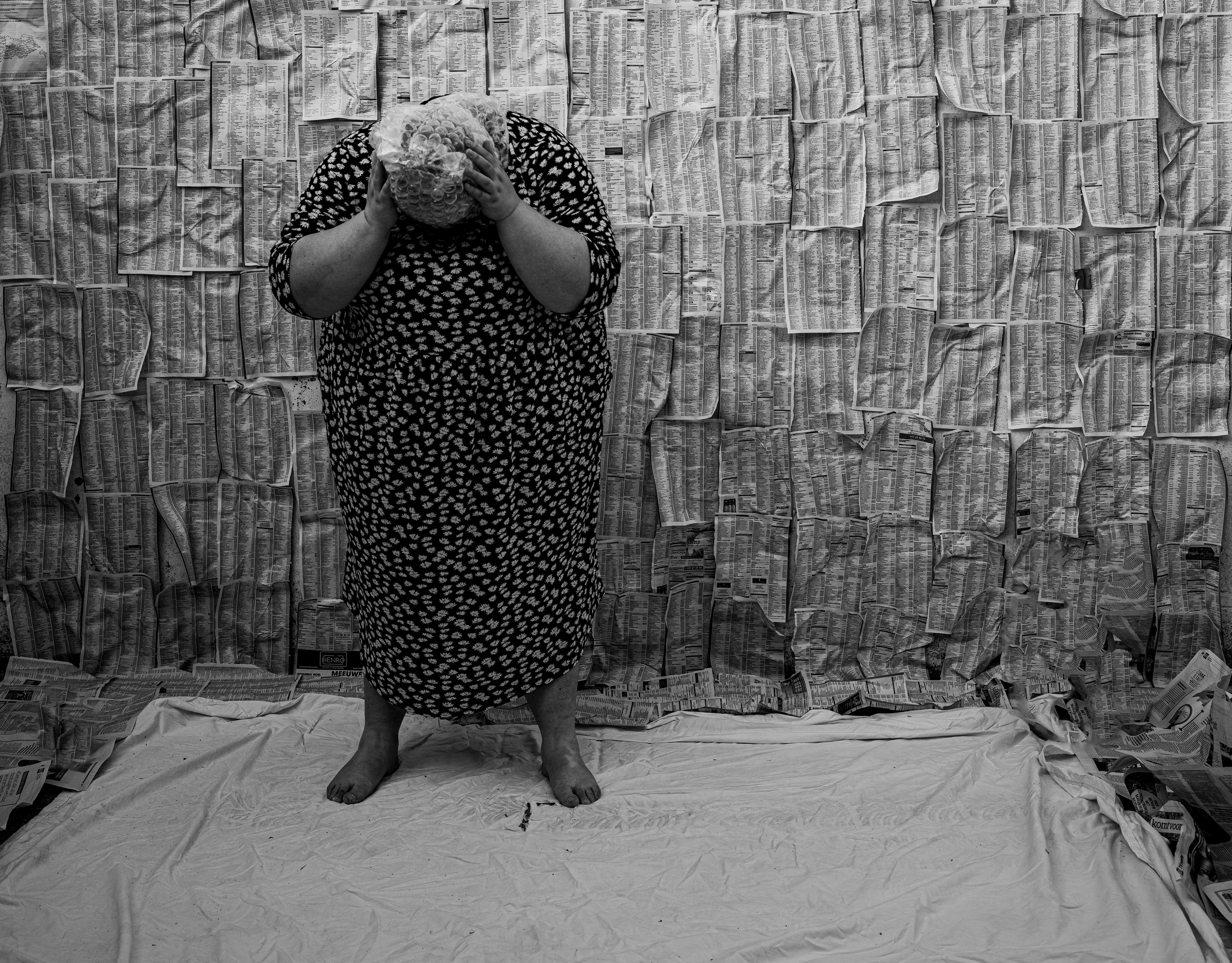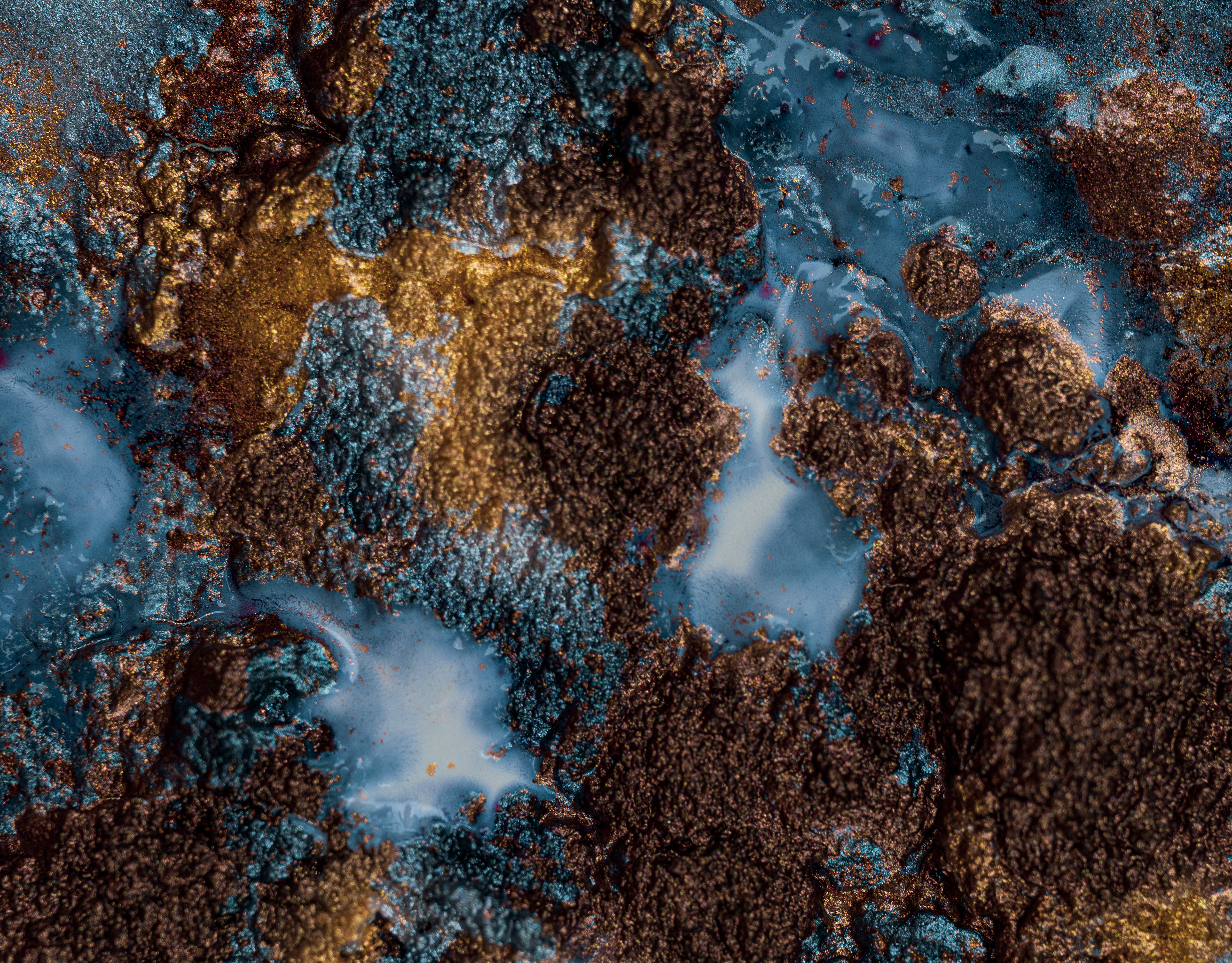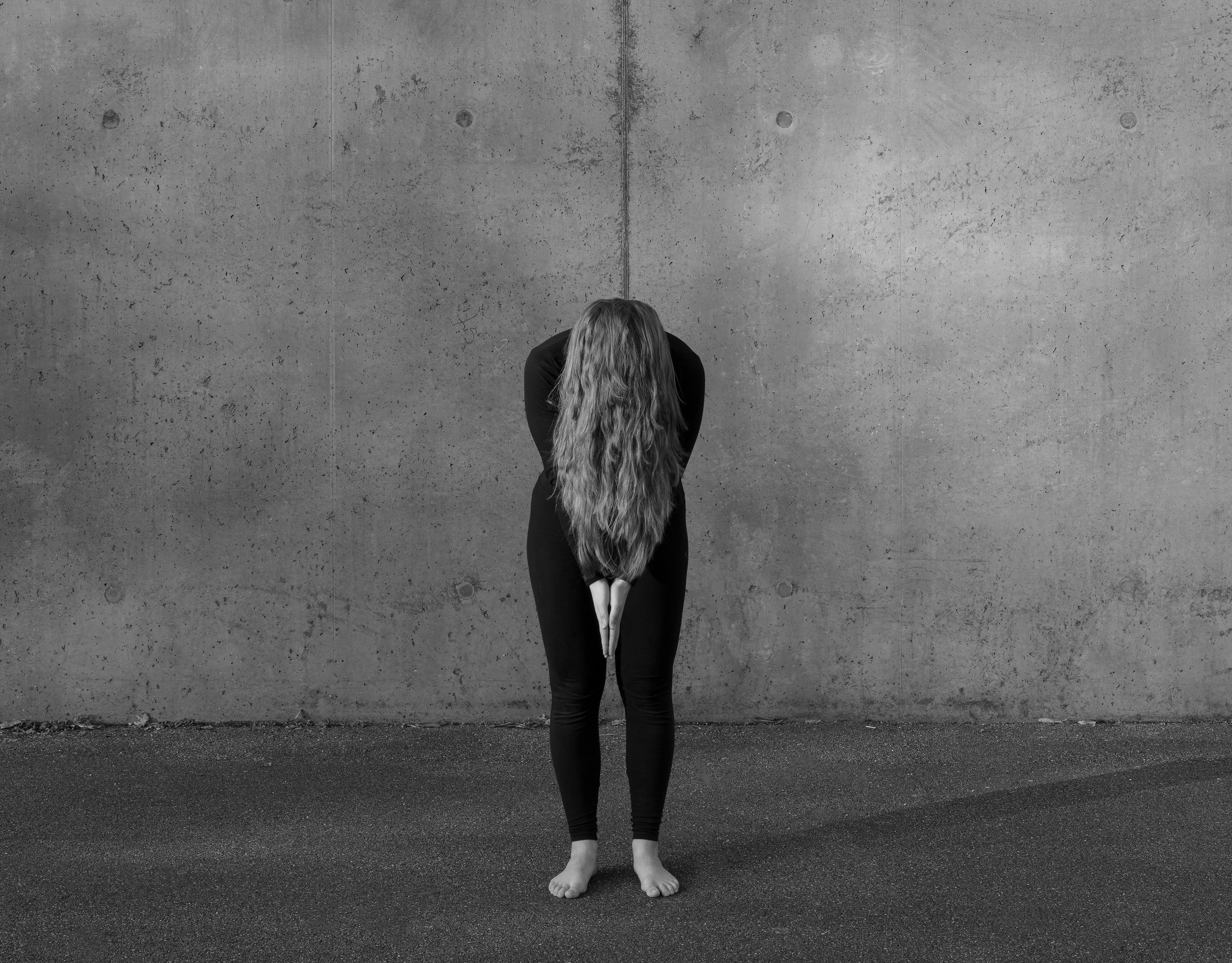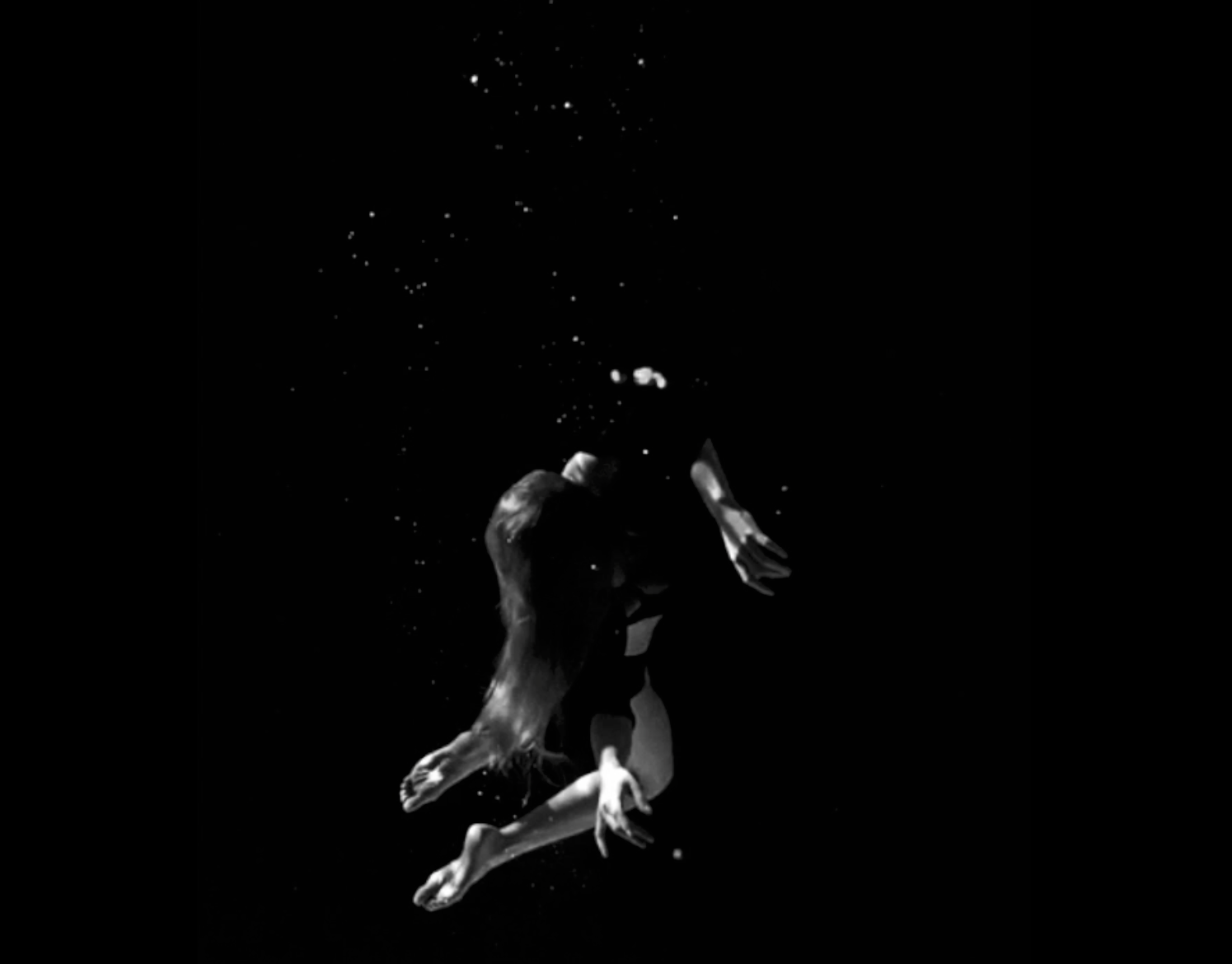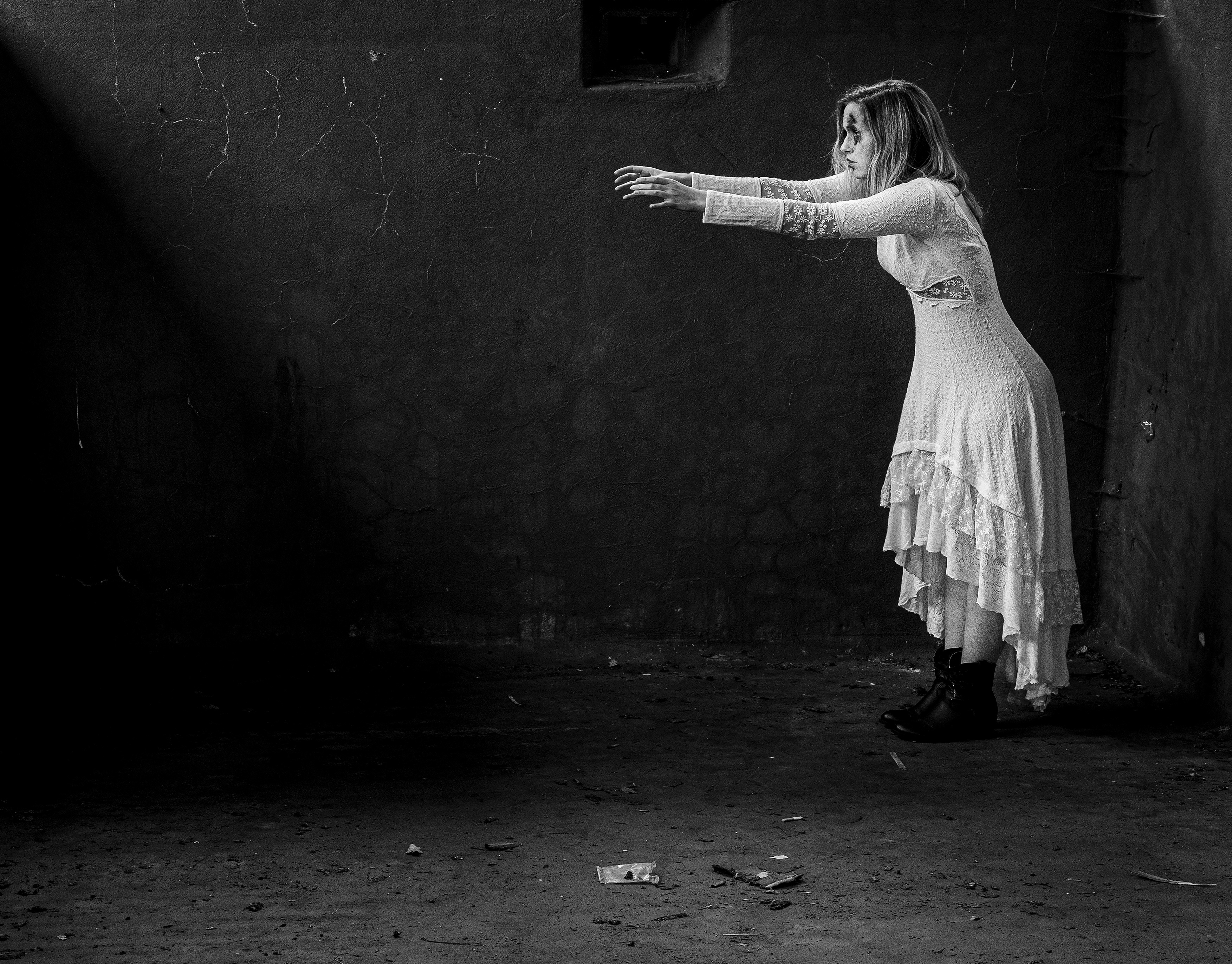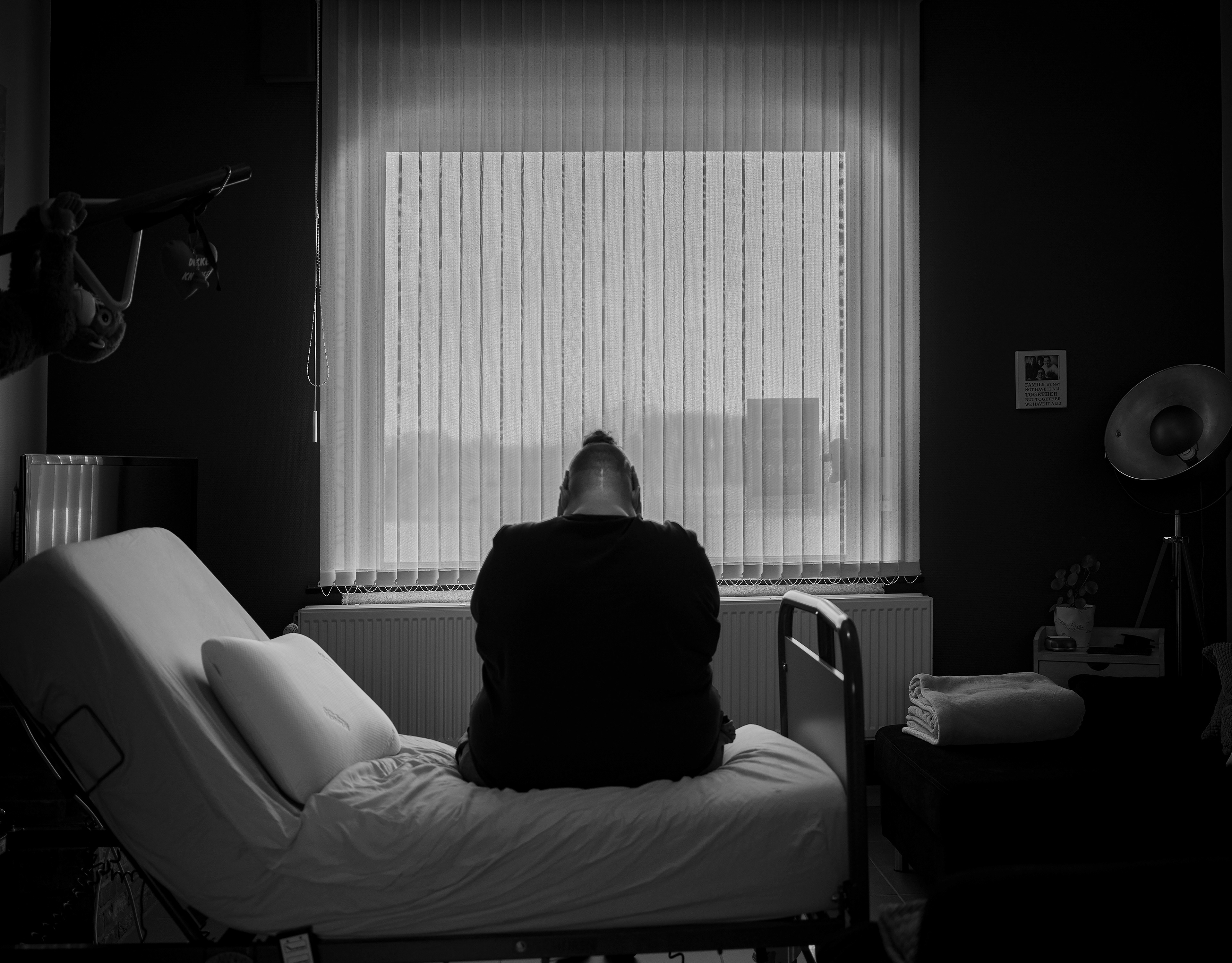It is part of life: losing someone. But what if it happens to you? How do you then deal with the great sadness and grief?
We don’t want it to last too long, we don’t want it to disturb us. In the beginning, we look for the sad person, but then we want to move on. To get an answer to my research question whether a microscopic image (blood) can have a therapeutic effect for people who have lost a person in their life. A qualitative research will be done by literature studies, interviews, microscopic & audio experiments,... At the same time, a population group of 5 persons is composed who have all experienced loss in their lives and who therefore play an active role in the bachelor thesis.
Then the microscopic images of blood were formed into a 'Choreomania Object'. This object started as a symbol for mourning and that this may be vividly present in our society even though we often do not allow it. An object that opens the way to conversations, memories, ... but above all lets the negativity surrounding mourning flow away and brings new insights in its place. It has an uncontrollable urge to dance, especially in a frenzied, convulsive way. In short, an object in motion literally and figuratively, as it is handed back to its owner afterwards.
